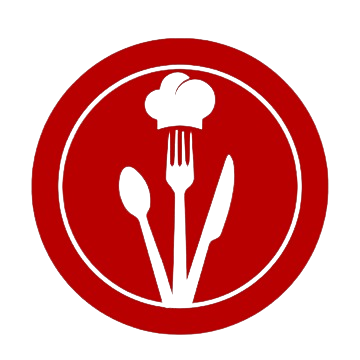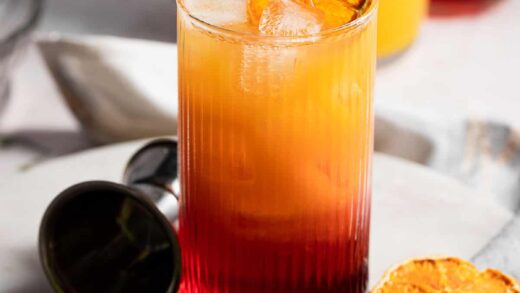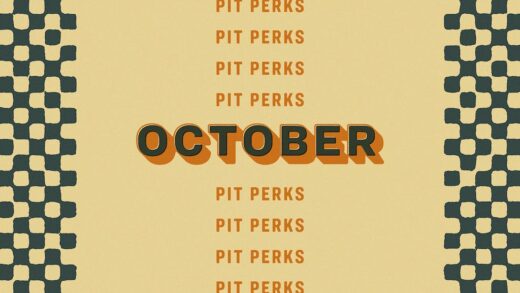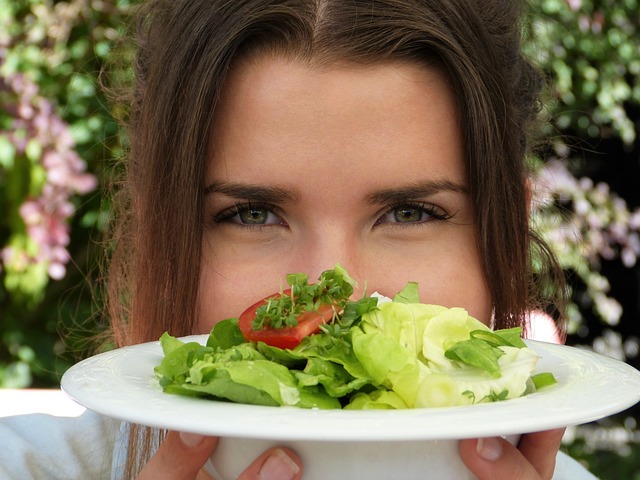
Living in a cold climate, you quickly learn that not all plants can withstand a frosty winter. While many fruit trees, like cherries, peaches, and apricots, struggle in extreme cold, apple trees can be incredibly resilient.
In this article, we’ll explore the best cold hardy apple trees for Northern growers and I will tackle:
- Hardy apple tree varieties with long histories
- Hardy apple tree varieties with unique flavor profiles
- Easier-to-grow disease resistant hardy apple trees.
- And as a bonus I will feature some of the best hardy crabapple trees.
So let’s dig in!

How do you choose the best cold hardy apple tree for your climate?
Many types of fruit trees need to experience cold temperatures in order to produce fruit. Chill hours are the number of hours that a tree experiences temperatures below 45° F (or about 7° C). Most apple trees, for instance, need between 800 and 1500 chill hours.
But extreme cold weather that dips below -20° F (-29° C) can damage fruit trees in many ways:
- The roots can freeze and die, preventing the tree from taking up water and nutrients.
- Harsh winds, cold weather and sunshine can cause tree wounds that serve as an entry point for fruit tree pests and diseases.
- And the cumulative stress caused by extreme cold can weaken a tree or even kill it outright.
Not all fruit trees are equally susceptible to cold temperatures. There are many factors that affect how well a particular tree will withstand the cold and here are a few of them:
- The type of fruit. For instance, mango trees will not survive in a cold climate but many apple trees varieties adapt well to frosty climates.
- The tree variety. Winter hardy apple trees are varieties that thrive in cold climates while other varieties, like Anna, are not adapted to the cold.
- The rootstock. Most fruit trees are propagated by grafting and are created by fusing a fruiting branch onto the roots of another tree. Some rootstocks are better for cold climates.
- The tree’s general health. Trees planted in ideal conditions and cared for properly are more resilient than weak and neglected trees.
The best cold hardy apple trees have been specifically bred to withstand the challenges that cold climates bring and some of these trees can thrive even when temperatures dip to -30°F (-34°C) and beyond!
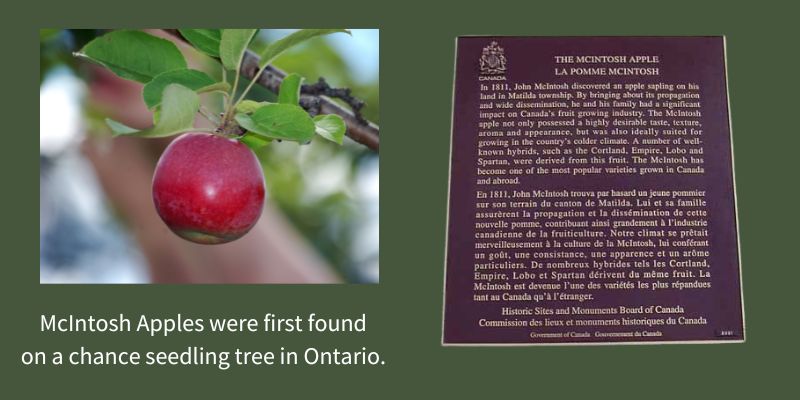
How are apple trees for cold climates developed?
Some winter hardy apples started off as chance seedlings. And others were developed in plant breeding programs. Here is the difference:
Chance seedling trees: Each time you plant an apple seed, you will have a genetically unique tree. That’s because apple seeds contain the genetic material from both the mother tree and the father tree. The combination of those genes will result in a new tree that is different from both of its parents.
Apple trees grown from seed can be very hit or miss. You might get a tree that produces a great tasting apple – or you might not. When you do find an apple tree that produces amazing fruit and grows well in a cold climate it’s like winning the lottery!
If your seedling tree produces wonderful fruit, you can clone it through grafting. The McIntosh apple is a perfect example. In the late 1800s, John McIntosh discovered this chance seedling while he was clearing his farm in Ontario, Canada. He grafted and sold these wonderful trees and the McIntosh apple trees soon became a favorite across North America.
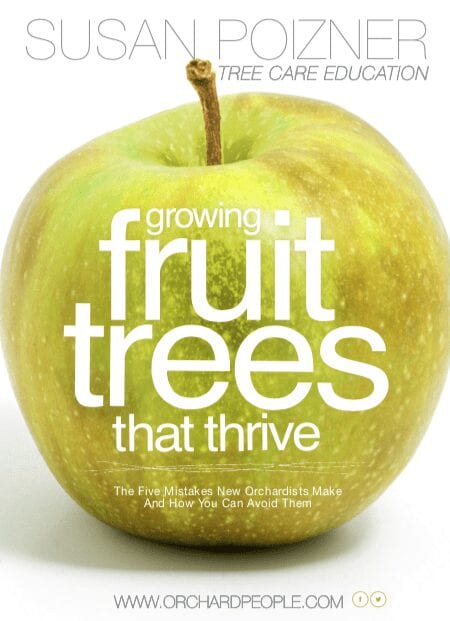
Fruit Tree Care Newsletter
Sign up for our monthly newsletter and we will send you our eBook “Growing Fruit Trees That Thrive.” You can unsubscribe at any time.
Trees from plant breeding programs: Some of the best cold hardy apple tree varieties are the result of plant breeding. That means that breeders take the pollen from one apple variety and they use it to fertilize the flowers of another apple variety. The resulting seeds are planted, and the new trees that grow from those seeds are tested for winter hardiness, disease resistance, flavour, texture and juiciness and other characteristics.
For example, breeders at the New York Agricultural Experiment Station introduced the Empire apple tree in 1966. Its mother tree was a McIntosh apple tree and the pollen came from a Golden Delicious tree. One of the resulting seedlings was Empire, a cold climate apple tree that produced reliable harvests of great tasting fruit. These trees are popular in New England and grow well in other zone 4 climates too.
In the list below you’ll have examples of both chance seedling trees and trees developed by plant breeders…so let’s dig in!

The best cold hardy apple trees with rich histories
I love apples with unusual flavours and interesting histories! And there are many heirloom apple trees for cold climates. Here are some of the best:
Snow apples have been around for 400+ years
Hardiness: USDA Zone 3
One of my favorite heirloom apple trees is called Snow. Some believe that Jesuit missionaries brought this tree to North America from France in the 1600s.
This apple is called Snow because of its pure white, juicy flesh. The fruit tastes great fresh or cooked. While they were popular in the 18th and 19th centuries, it’s hard to buy Snow apples today. So if you want to eat them, you need to grow them yourself!
Huge Wolf River apples are great for baking
Hardiness: USD Zone 3, somewhat resistant to scab and cedar apple rust
Wolf River is a wonderful baking apple with fruit that is so large that some say you can make a whole pie out of a single apple. This variety was introduced in 1870 by William Springer who lived along the Wolf River in Wisconsin. Springer had planted a number of apple trees from seed and one of them stood out because of the size and quality of the fruit.

Other excellent heirloom winter hardy apple trees that you can consider include: Northwestern Greening (Introduced in 1872 and hardy to zone 3), Granite Beauty (introduced in 1815 and hardy to zone 3), Duchess of Oldenburg (Introduced in the early 1800s and hardy to zone 2) and Dudley (Introduced in 1888 and hardy to zone 3).
The best cold hardy apple trees that are also resistant to disease
Apple trees are susceptible to a number of common diseases, like apple scab and fire blight, that can damage tree health and destroy the fruit. So in recent years, breeders have focused on developing disease resistant apple trees for cold climates that are much easier to grow. Here are some fantastic options that I grow in my orchard.
Pristine is an early apple that is sweet, crispy and keeps well
Hardiness: USD Zone 4, resistant to apple scab and powdery mildew
I discovered the Pristine apple during a visit to a farmer’s market in Chicago. When I see an apple variety that I have never tried before, I have to taste it and in this case it was love at first bite. These pretty round yellow apples are crisp and a perfect mix of sweet and tart.
Purdue University in West Lafayette, Indiana introduced this winter hardy apple tree in 1994. Pristine is resistant to apple scab and powdery mildew. It ripens in August before most other apples. And it keeps in the fridge for up to 6 weeks. If you like fresh eating apples, you can’t go wrong with this tree.

Liberty and Freedom Apples Offer Freedom from Disease
Cornell University’s breeding program in Geneva, New York has come up with so many wonderful winter hardy apple varieties over the years and two of my favorite easy-to-grow options are Liberty and Freedom.
Liberty (Hardy to USDA Zone 4) was introduced in 1978 and is wonderful for home growers because it is resistant to apple scab, cedar apple rust and fireblight. Its skin is red with a yellow-green background and it has crisp and tasty white flesh that stores well into winter. This fresh eating apple also makes an excellent sweet cider.
Freedom (Hardy to USDA Zone 4) was introduced in 1958 and also is resistant to apple scab. It is a wonderful apple with red skin and creamy white flesh that is excellent for fresh eating, baking and for apple juice. Freedom produces reliable annual harvests from a relatively young age.
Other disease resistant winter hardy apple trees to consider include Redfree (Introduced in 1981 and hardy to zone 4), Novamac (Introduced in 1978 and hardy to zone 4) and Sweet Sixteen (Introduced in 1978 and hardy to zone 3).

The best cold hardy apple trees with unusual flavor profiles
For years, I thought all apples tasted pretty much the same. But over the years, I have been involved in many apple tastings. And I learned to identify the flavours in the different varieties.
Two of my very favorite winter hardy apple trees produce apples that will stand out to anyone, even if you have little experience tasting apples.
Ginger Gold is a fresh eating apple that resists browning
Hardiness: USDA Zone 4, susceptible to powdery mildew and fireblight
The original Ginger Gold seedling tree was discovered in 1969 in an orchard that was partially destroyed by Hurricane Camille. The owners, Ginger and Clyde Harvey, found this seedling tree as they were cleaning up the uprooted trees.
The seedling produced yellow apples – many think that one of its parent trees was Golden Delicious – and its creamy white flesh is sweet with just a bit of tartness. It’s wonderful for eating right off of the tree and it resists browning so it works well sliced into salads. Ginger Gold is also an early season apple, producing fruit when other apple trees are not yet ripe.
Silken is a candy apple without the candy
Hardiness: USDA Zone 4
Developed by the Pacific Agrifood Research Centre in Summerland, British Columbia, Silken is a yellow apple for those of us who love apples that are crisp and sweet. It’s best eaten soon after harvest time, so it’s difficult to find in supermarkets. You can find it in some farmers markets or you can grow it in your own backyard!

The best winter hardy crabapple trees for fabulous blossoms and tasty fruit
Today people grow crabapple trees because of their beautiful blossoms and long flowering times. The tasty fruit is just a bonus. But before modern day refrigeration, crabapples were very popular because their small size made them easy to preserve as shelf-stable pickles or crabapple jelly.
Dolgo Crabapples are tasty right off the tree
Hardiness: USDA Zone 2, resistant to apple scab and fireblight
There are lots of crabapple trees that will survive and thrive in cold climates, but one of my favourites is the Dolgo crabapple. The original seedling was said to have come from Russia in 1897, but it was formally introduced in 1917 by Niels Hansen, a plant breeder from South Dakota.
In our community orchard, most of our apple trees are harvested early by passers-by who harvest the fruit before it is fully ripe. But few notice the Dolgo apple tree, which is hidden in a part of the park where it is surrounded by evergreen trees. The fruit is tart but tasty fresh or cooked and it makes a luminous pink crabapple jelly that is a delight in the winter months.
Hansen’s Red Fleshed Crab for a Deep Red Apple Jelly
Hardiness: USDA Zone 3, mildly susceptible to apple scab)
South Dakota breeder Niels Hansen also developed a red fleshed crabapple that he introduced a decade after the Dolgo. This tree which can handle temperatures of -40° F (-40° C) produces small fruit with deep burgundy skin and flesh. Even the seeds are red!
I have not yet tasted these cold hardy crabapples, but in his book Hardy Apples: Growing Apples in Cold Climates, author Bob Osborne says these crabapples can be pickled or sugared and that they make a delicious deep red apple jelly.
The Hardiest Apple Trees Around
There is such a wide selection of winter hardy apple trees. But what if you live in a really, really cold climate? There very few plants that can survive in USDA zone 1 climate…but there are a few apple trees that can definitely live, thrive and produce a wonderful harvest in USDA zone 2. One of them is the Parkland apple which was developed in Canada.
Parkland is a winter hardy apple tree for the coldest climates
Hardiness: Zone 2
Can you grow apples in Alaska? You bet! And the Parkland apple tree is perfect for it. The Morden Research and Development Centre in Manitoba introduced this apple in 1979. The fruit is medium sized with a yellow/green skin and a red blush.
It’s not known as a wonderful eating apple. But the Parkland apple is an excellent, tart apple for baking and sauce. So if you live in a really cold climate, this is a wonderful winter hardy apple tree to grow.
Learn about 90+ of the best cold hardy apple trees in this book
In this article I have profiled a number of my favorite winter hardy apple trees. But there are many more that you can choose from. Osborne’s book, Hardy Apples: Growing Apples in Cold Climates, which profiles of 90 winter hardy apple varieties, is a great resource.
Where to buy apple trees for cold climates?
One of the best ways to research winter hardy apple trees is by perusing the catalogues of some local fruit tree nurseries. These nurseries will carry a wide range of varieties and offer high quality trees. When you’re ready to get started, visit our specialist fruit tree nursery list which features 50+ specialist fruit tree nurseries across North America. Then choose a nursery that specializes in winter hardy fruit trees.
Happy Planting!
This page includes affiliate links. Orchard People may receive a small commission if you make a purchase. The funds will help support the creation of free resources including our blog, YouTube channel and podcast.
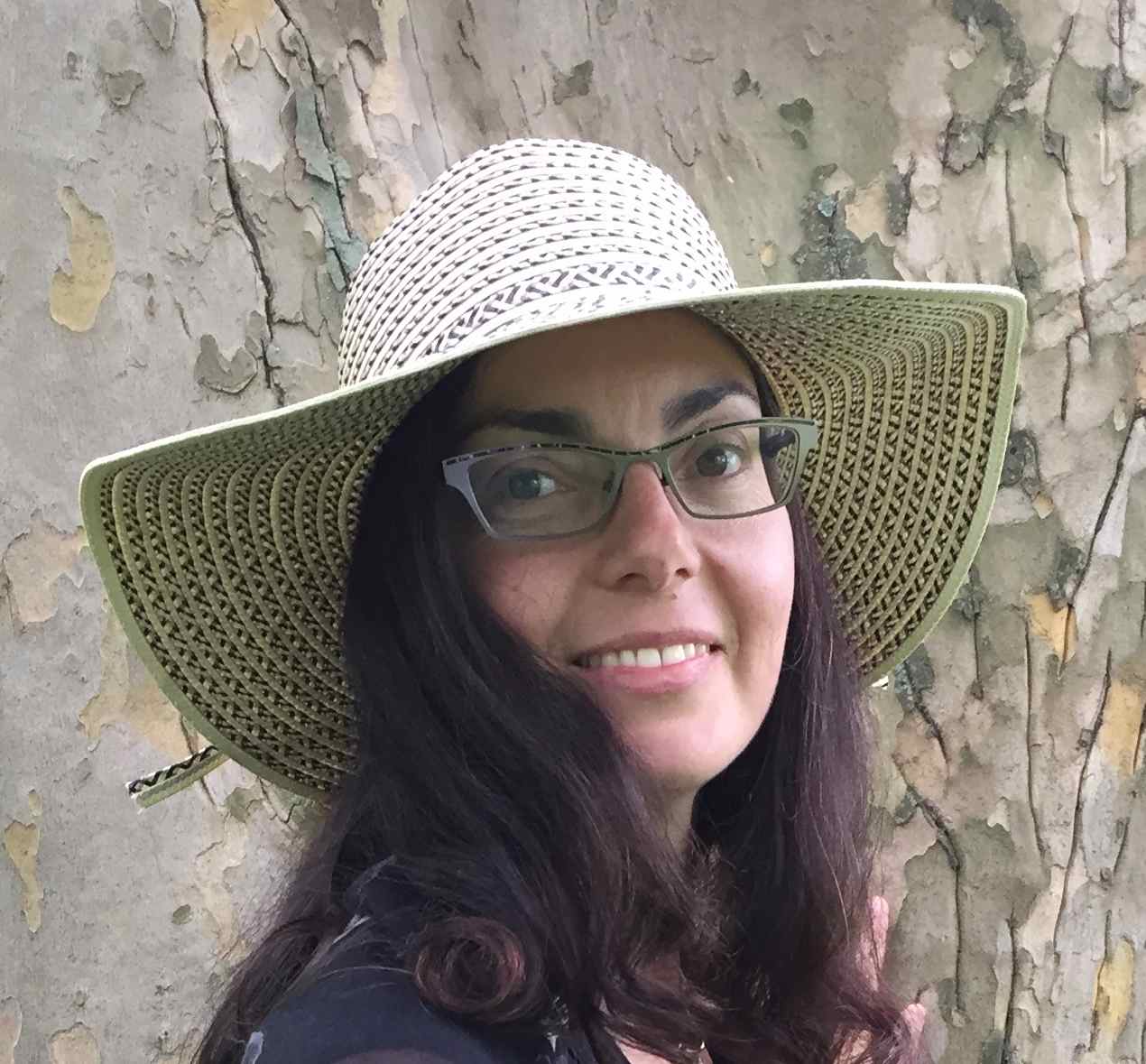
#Cold #Hardy #Apple #Trees #Growers #Cold #Climates
